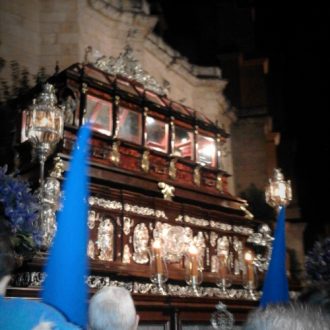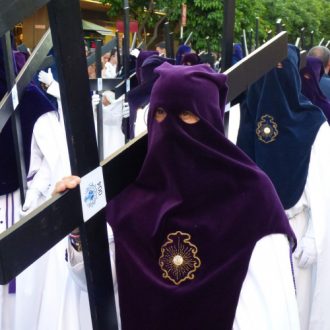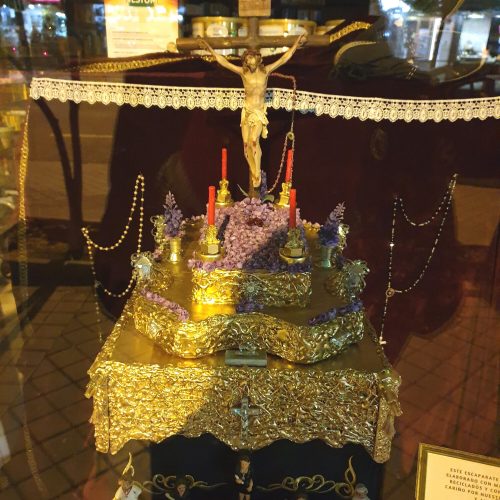
What Semana Santa Means to Me: An Interview with a Granadina
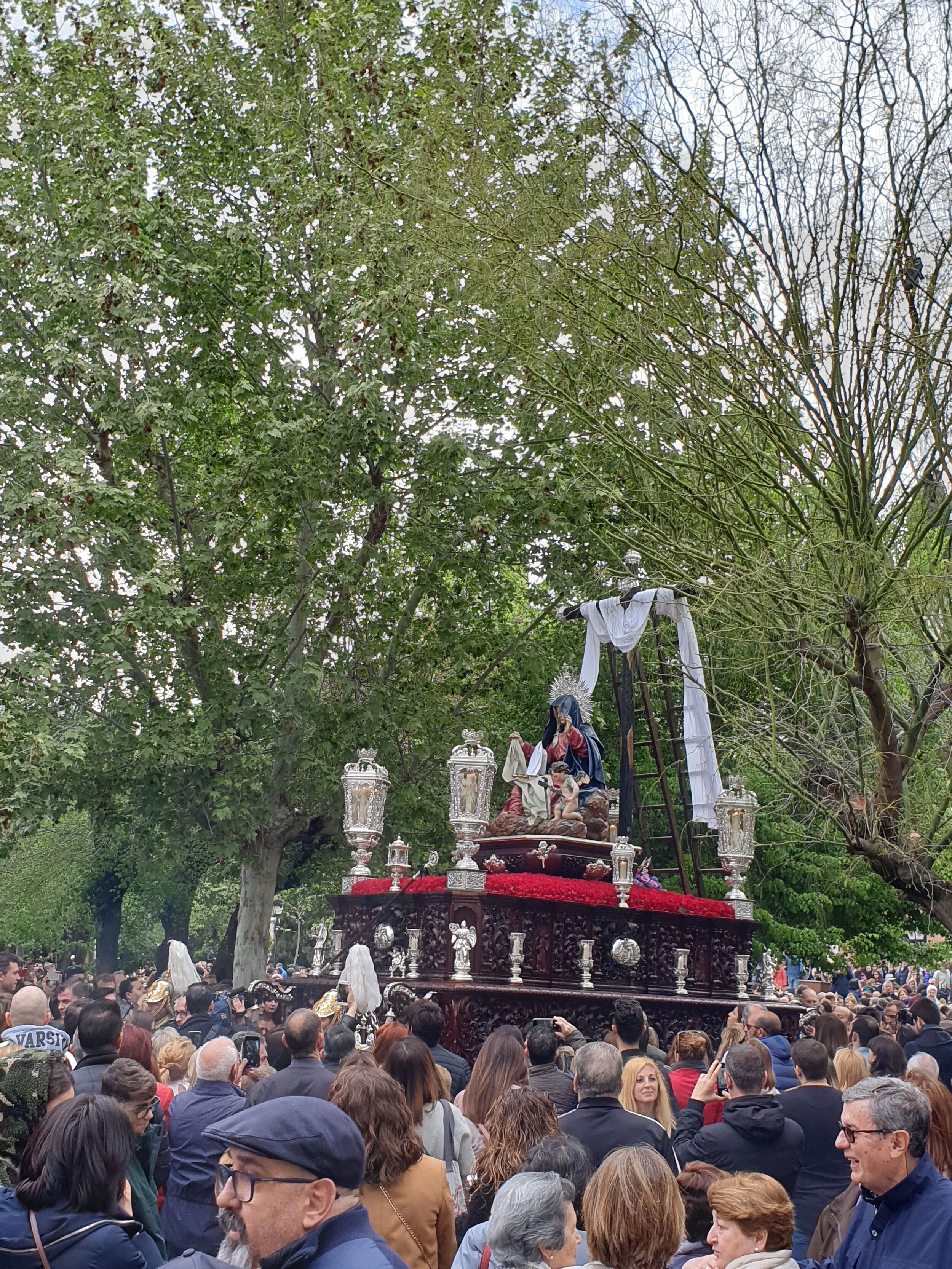 Dear Alex,
Dear Alex,
We talk a lot about Semana Santa (the Holy Week leading up to Easter) here on the blog. However, we recognize that much of what we share is from our experience, but that means the experience as ‘outsiders’ or ‘non-natives’ of Spanish culture. That’s why this year, despite the ‘postponement’ of the holiday celebration (future dates not at all specified), we’d like to share the insights of a friend of ours, Concepción de Luna Gonzalez. Conchi, as we know her, is a granadina through and through. She was kind enough to sit down with us and talk about the traditions of Semana Santa in her hometown, diving into her personal experiences over the years and what this time of the year means to her. We hope this interview will help you gain new insight into Semana Santa, even if we won’t be able to celebrate this year in the ways Conchi describes.
Please note that this interview was conducted in Spanish and therefore the answers are not direct quotations but rather translations/interpretations of the conversation we were able to have with Conchi about these topics. Our best effort has been put forth to maintain the integrity of what she shared, although what follows are not her exact words.
A few vocabulary words you may want to know that are used often in Spanish in this interview include:
Procesiones = processions
Pasos / Imagenes = the heavy ‘floats’ carried in the processions
Costaleros = the men who carry the floats
Penitentes = the ‘penitents’ who walk in the processions
Cofradías / Hermandades = the organizations who organize Semana Santa events
Mantillas = Female Penitentes who dress in black with a characteristic veil (mantilla)
Palcos = ‘box seat’-style bleachers set up to watch the processions
Granadino/a = a person from Granada
Without further ado, we bring you our interview with Conchi:
What does Semana Santa mean to you?
For us Christians, Semana Santa is very special because it’s when we believe the Passion of the Christ happened. And so, as it is supposed, we relive the events of that week—from when Jesus goes up Mount Sinai to meditate to when he returns and is received with the palm branches on Palm Sunday until he eventually dies on the cross and is resurrected. And so, as you can imagine, they’re seven very intense days, days full of intense liturgy.
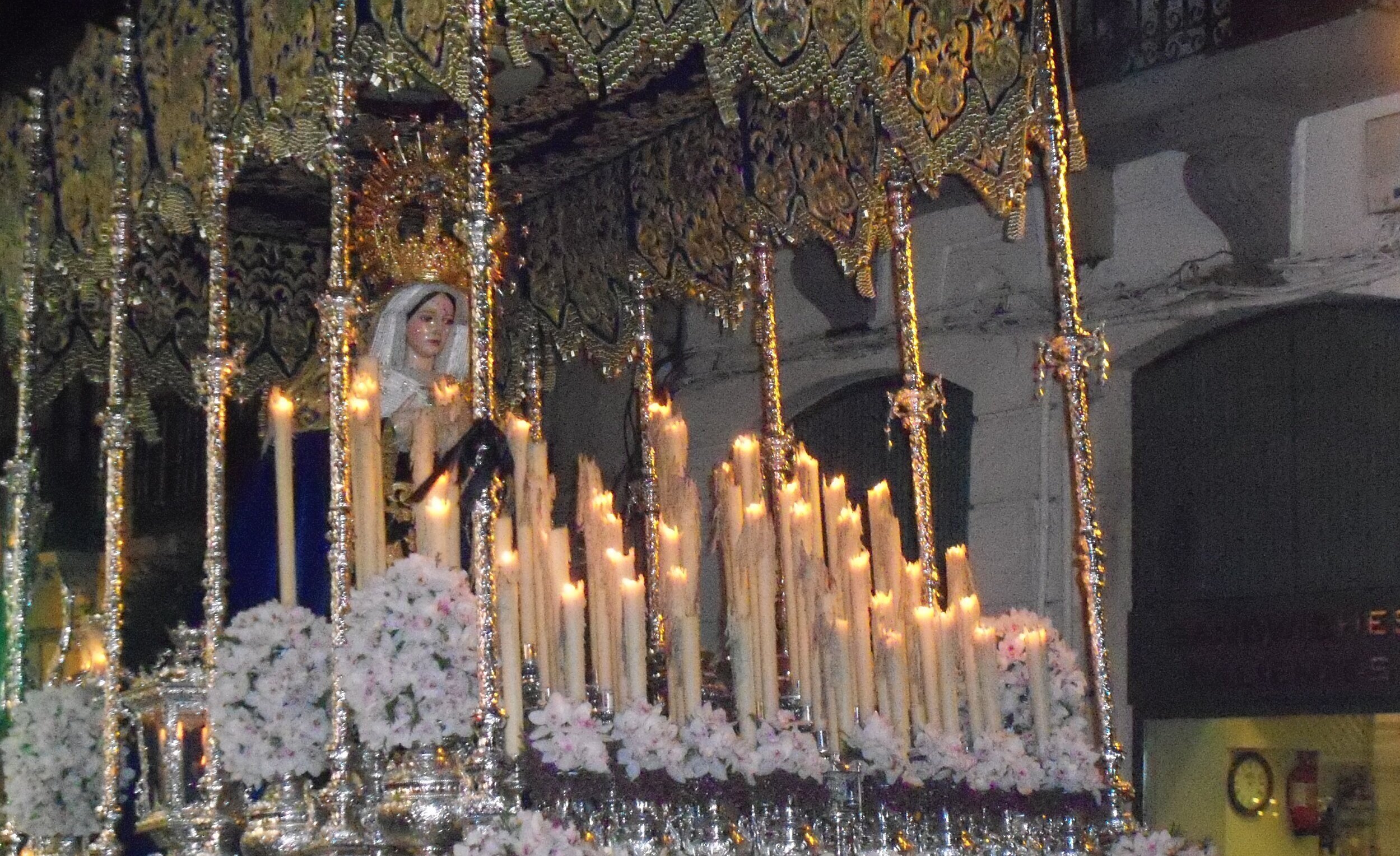 How would you describe Semana Santa for someone who’s never experienced it?
How would you describe Semana Santa for someone who’s never experienced it?
Well, I think Granada is a truly beautiful city and so it’s really something spectacular to be in the streets here—the streets of a city with so much enchantment—and see the contrast of the pasos of the processions against the backdrop of the Sierra Nevada mountains. I think it’s a very special claim to fame of Granada’s Semana Santa. Everyone should see it once in their life: this contrast of religion, joy, the beautiful city, everything really organized for this one reason.
Here in Granada, and in Sevilla, we really live the celebration! In comparison with the rest of Spain, the Semana Santas in Andalucía are very rich. I mean that economically-speaking but also because, despite the events of the week being very sad, here in Granada it’s lived with a lot of happiness, accompanied by marcha (essentially partying and celebration).
So, normally here in Granada we have the virgenes (the ‘floats’* with the virgin Mary) accompanied by bands with cornets and drums—but only when they have palio, which is the canopy that can cover them. The palio is a sign of respect towards the virgen. The floats with Jesus are accompanied by drums too, but with a more marked beat.
Here in Granada, it’s particularly difficult to carry the pasos because of the layout of the city. The Sacromonte, the Albaicín, they truly don’t have flat streets—it’s a lot of narrow hills, in fact. It’s really difficult to costar (carry the pasos on your back). Each costaleros carries the weight of approximately fifty to sixty kilos (approx 110-132 lbs) on his back.
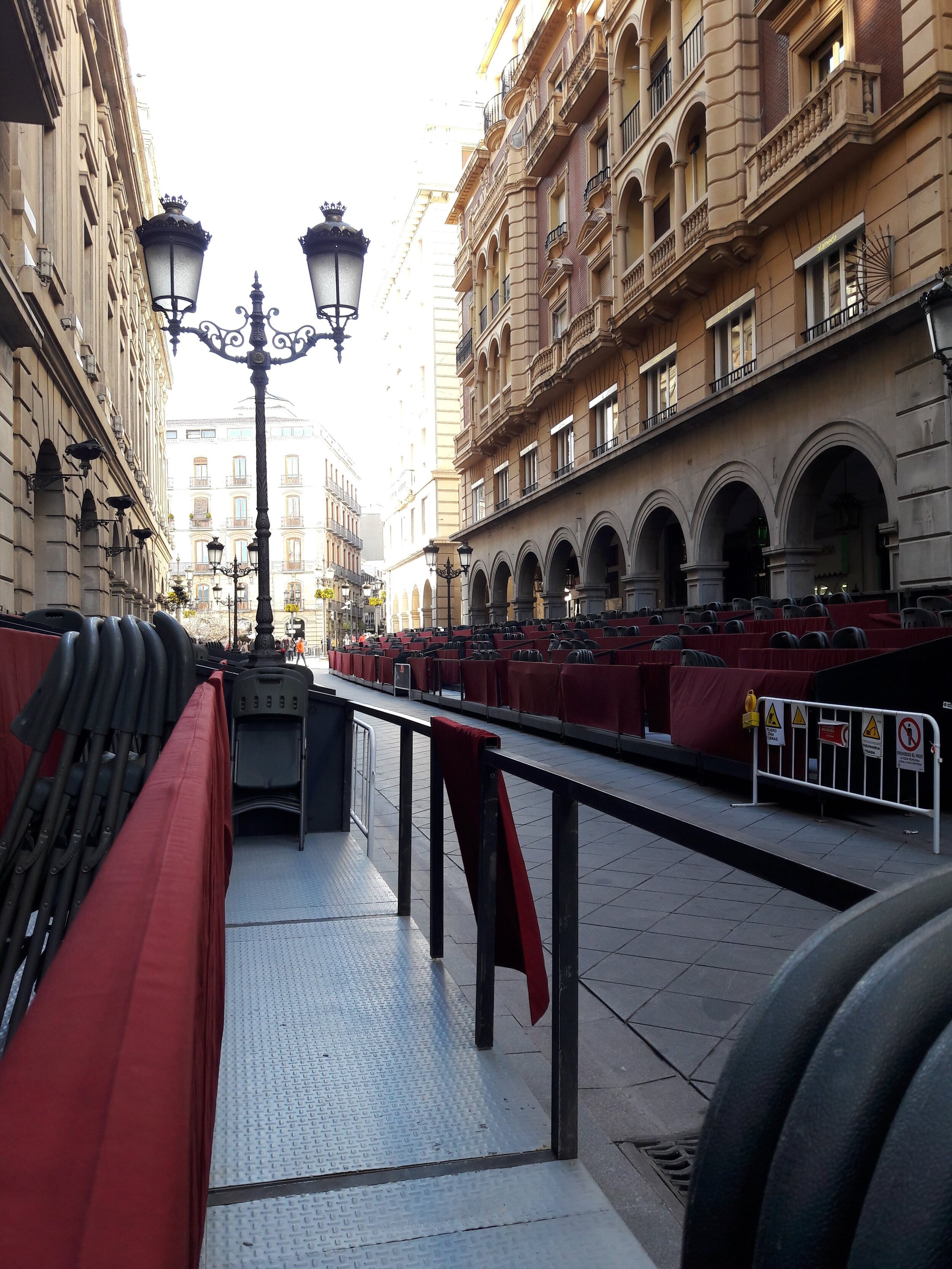 Does your family have special traditions during this week?
Does your family have special traditions during this week?
Yes, many traditions! For example we—my dad, my brothers, and I—always participated in cofradías. One of my brothers continues to do so to fulfill a promise he made to God when he was gravely injured in a motorcycle accident. He promised that if he recovered he would participate as a penitente every year, as long as his body permitted him to. And my mom has always participated as a mantilla, a steward of the virgin Mary. I’ve participated as a penitente in the past too but, while I like it, I don’t love it.
Do you get together with extended family during Semana Santa?
Well, no it’s not a holiday in which we necessarily get together with family. The opposite, really. Instead it’s used as a time to rest, or to travel, or to see your friends. Of course, it’s true that when we were younger we’d get the whole family together and go to watch the processions together. Back then we really lived Semana Santa more, following each day like it is in the Bible. When it was Domingo de los ramos (Palm Sunday) we all went to mass and got our ramos de olivo (olive tree branches). But now it’s not like that. In the past, you might get together for a family meal on Easter Day but now it’s not like that. Hoy vivamos más nuestro rollo. (Today we do own thing more.)
Do you like to go to watch the processions?
Yes, because my family has a tradition of watching them from los palcos. I don’t know if you’ve seen them, but along Calle Ganivet they set up bleachers along both sides of the street where the processions run and that’s where we sit and watch them. It’s true that when I was younger we had more of a tradition of going up to the Albaicín to watch from there because, since our family works as costaleros we like to watch them work there. However, now with the little kids and all, it’s much more comfortable to watch the processions from the palcos, in the ambiance of the city—it’s so beautiful!
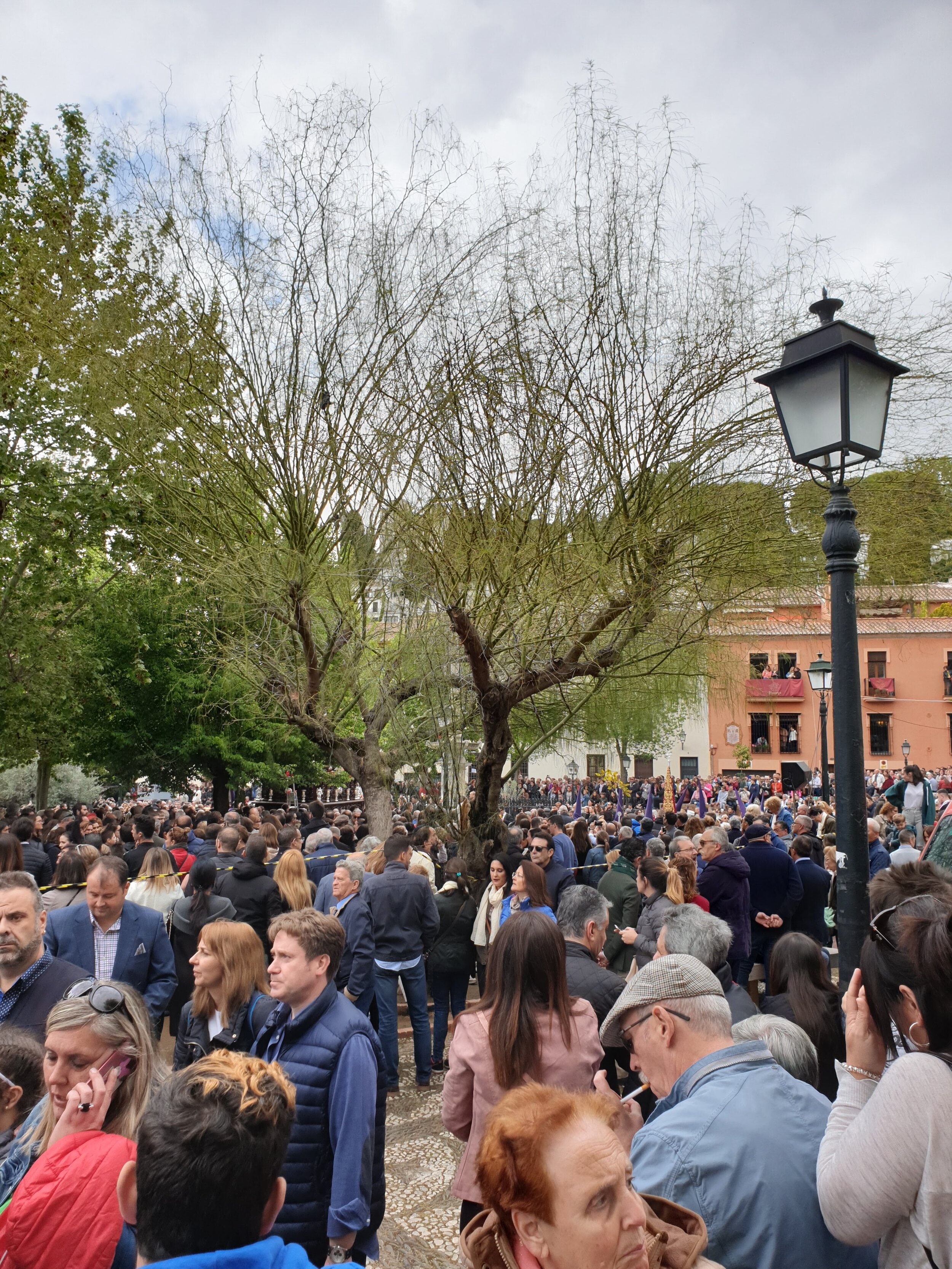 Do you have a favorite procession?
Do you have a favorite procession?
Yah! I really like Las Cania, which happens on Holy Tuesday; I also really like La Aurora and La Estrella; but the one I like more than anything is the procesion silenciosa. It’s very famous nationwide because there’s a legal obligation here in Granada—there’s an actual order established by city hall—that all the establishments in the center of Granada had to shut off their lights. And all of the city is truly committed to this hermandad. This hermandad is really strict; they don’t have any children or women as mantillas (women can be in the hermandad but only as penitentes). The procession is really beautiful, I like the silent one! And one other that I enjoy, that I highly recommend but not that many people in Granada know about it, is the one in the Campo de Principe at 3pm on Good Friday. It’s very interesting and cool because they don’t do an official procession route, then never go through the Cathedral or city hall. It’s interesting and different and no matter if it rains or shines the plaza is full of people.
Would say the celebration of Semana Santa has changed over the years?
Well, Semana Santa in and of itself is very different depending on the region you go to. For example, in the communidad de Castilla y Leon, it’s very austere and sad. It’s very silent, very dark and it’s a bit scary. There aren’t trumpets, cornets, drums, nothing like that! Well, just one drum marking the beat. The streets shut down and the imagenes are very imposing because they tend to be tragic and less colorful. It’s a huge change from Andalucía, the traditions and the celebration itself. Things have changed a lot since I was little too and Semana Santa is lived in a different way now, as I mentioned before.
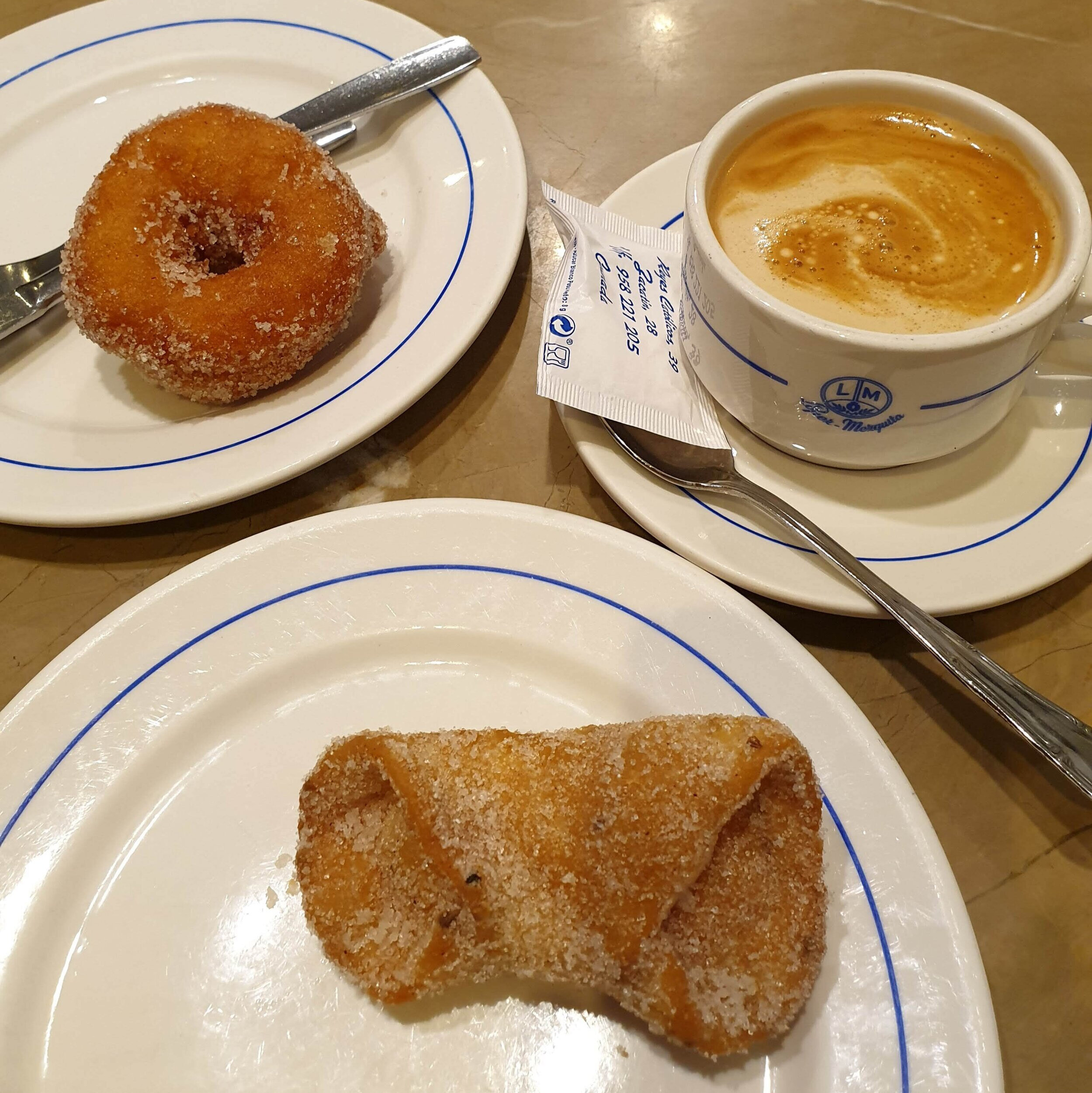 Are there any special foods related with Semana Santa?
Are there any special foods related with Semana Santa?
Historically, we observed vigilia, which means that we wouldn’t eat meat on Fridays during Lent and so we’d eat a lot of fish and things like that but no one really does that anymore. Normally, when Semana Santa comes around the older people cook a lot of arroz con leche, pestiños, and rosquitos de azúcar. That’s very traditional here in Granada—but for the older people! Nowadays, no one has time to make these things from scratch. However, it’s true that when I was a little girl my grandma always made arroz con leche and rosquitos de azúcar by hand.
What city would you recommend for someone to experience Semana Santa?
Personally, Granada! And it’s what I mentioned, Semana Santa in Sevilla is very important as well, of course, but I think and—well, I’m granadina, aren’t I?—but I believe our Semana Santa is so spectacular because it’s really difficult to work in the streets of Granada. The streets in Sevilla are so wide, they’re enormous! They’re avenues where you can fit three or four cars across. And the costaleros in Sevilla work very hard, don’t get me wrong, but here in Granada it’s just so complicated to maneuver the imagenes through a city with such narrow streets.
And of course, it’s so impressive to be able to be up in the mountains skiing in the morning, then come down to the city to appreciate the processions in the afternoon. Then the next morning you wake up and you can take a trip to the beach and return again for the Semana Santa celebrations. It’s a privilege of being here in Granada that Sevilla doesn’t have and never will have. So yes, personally, if I had to pick between Semana Santa in Granada and Semana Santa in Sevilla—especially with little kids—I wouldn’t think twice. Here you have so much to see and so many places to go nearby and I think our Semana Santa is more important for that reason.
Do you think Semana Santa is religious celebration for everybody?
No, in the past, of course—it exists for religious reasons. And before we were very careful not to eat meat on Fridays; everyone went to a lot of masses. It was another thing altogether when I was little. But nowadays it’s not like that—it’s more about enjoying yourself, going out and partaking in the happiness that fills the streets. And then there are also a lot of families in Granada that take the time off to go down to the beach for a few days. Since it’s so close and there’s usually good weather at this time of the year so many families do that.
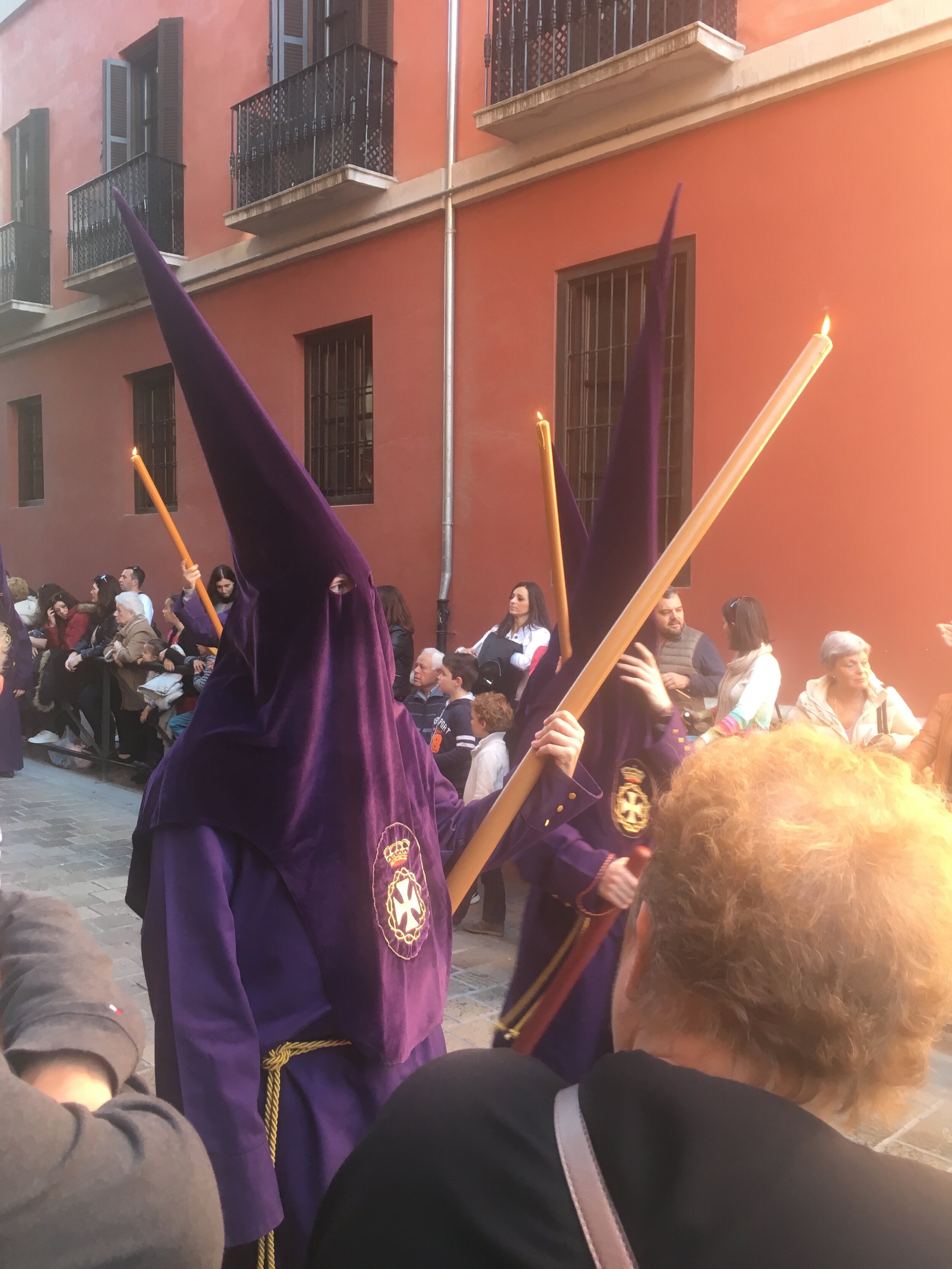 Finally, do you think people need to know something about religion and the traditions to appreciate it?
Finally, do you think people need to know something about religion and the traditions to appreciate it?
I personally think that, independent of being a believer or not, when people see the imagenes themselves they tend to respect all that they represent. Whether they’re religious or not, it’s impactful to see how beautiful the pasos are and how hard the people in the processions work. I mean, you think about the fact that the robes that the Virgin Marys wear are made by women who spend the entire year—year after year—stitching them together with golden thread. Some of them are women who are retired, others only have a little free time in the evenings and nights, but they spend this little time they have making these robes. Es un detalle. (It’s quite the gesture.)
The same is true of the palios and the flowers. All of the flowers are made of wax, completely crafted by hand. And don’t forget that the work of a costalero lasts all year. They’re constantly practicing in areas like the Realejo with sacks of dirt on their backs to prepare for Semana Santa. The sacks are measured to weigh as much as what they’ll bear under the pasos and, trust me, it’s not easy to walk with that kind of weight like that on your back! Let alone keep beat with the music as you’re doing it, so they practice that too. It’s difficult; there’s a lot of work that goes into Semana Santa, so, whether they’re religious or not, people tend to respect that and enjoy seeing them.
Thank you so much to Conchi for this interview and for helping us live the spirit of Semana Santa virtually this year.
Have you experienced Semana Santa in Spain in all its glory? What was most interesting or impactful for you? Please share your thoughts and experiences down below.
Happy Holy Week to all who are celebrating!
Sincerely,
Spain
*Called ‘pasos’ in Spanish, these heavy statues that are carried for miles on the shoulders of the men who work as costaleros during the Semana Santa processions are anything but light. Therefore, although we will translate them to ‘float’ due to a lack of better vocabulary in English, please be aware these are not the kind of floats you may be used to.


